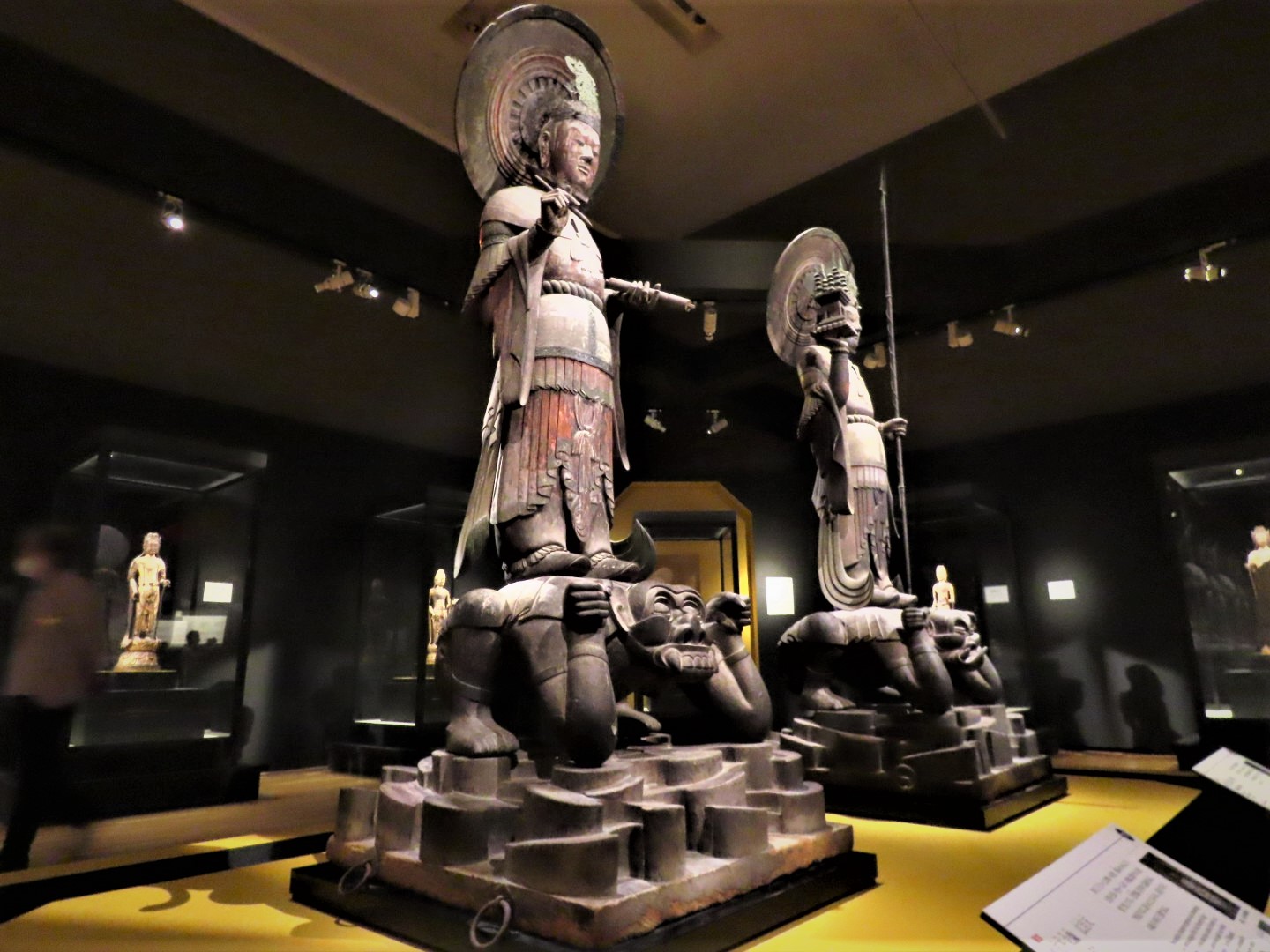
Four Tenno Statues Hirometen / Tamonten Asuka Period, 7th Century Nara, Horyuji Collection
From July 13th (Tuesday) to September 5th (Sunday), 2021, Prince Shotoku's 1400 Memorial Special Exhibition "Prince Shotoku and Horyuji Temple" is being held at the Tokyo National Museum Heiseikan. A special preview for the media was held the day before the release, so this time we will tell you about it.
Horyuji Temple The beauty of prayer in 1400, all of which is here.
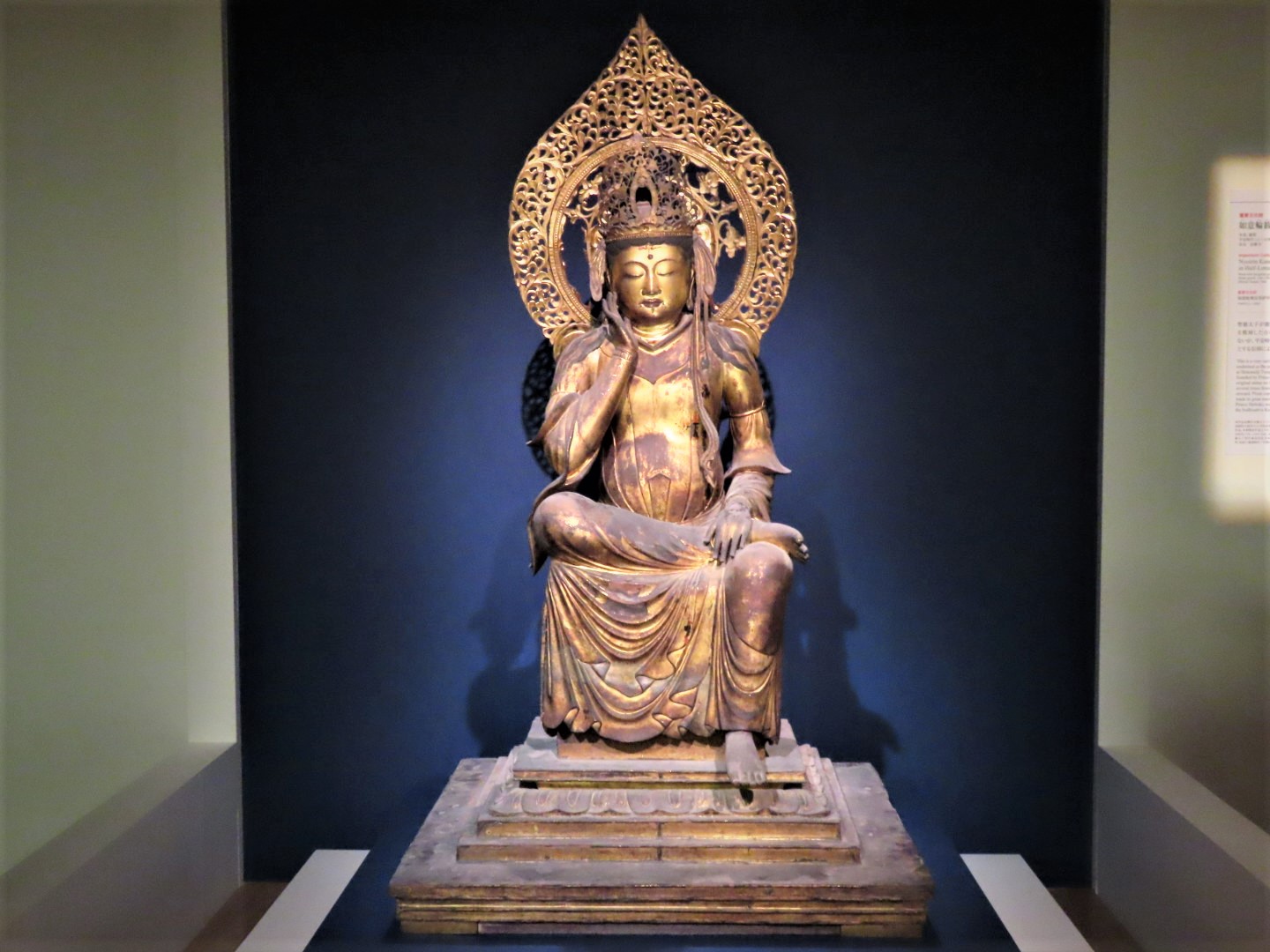
When you step into the venue, you will be greeted by the statue of the Bodhisattva Bodhisattva (Horyuji Collection).
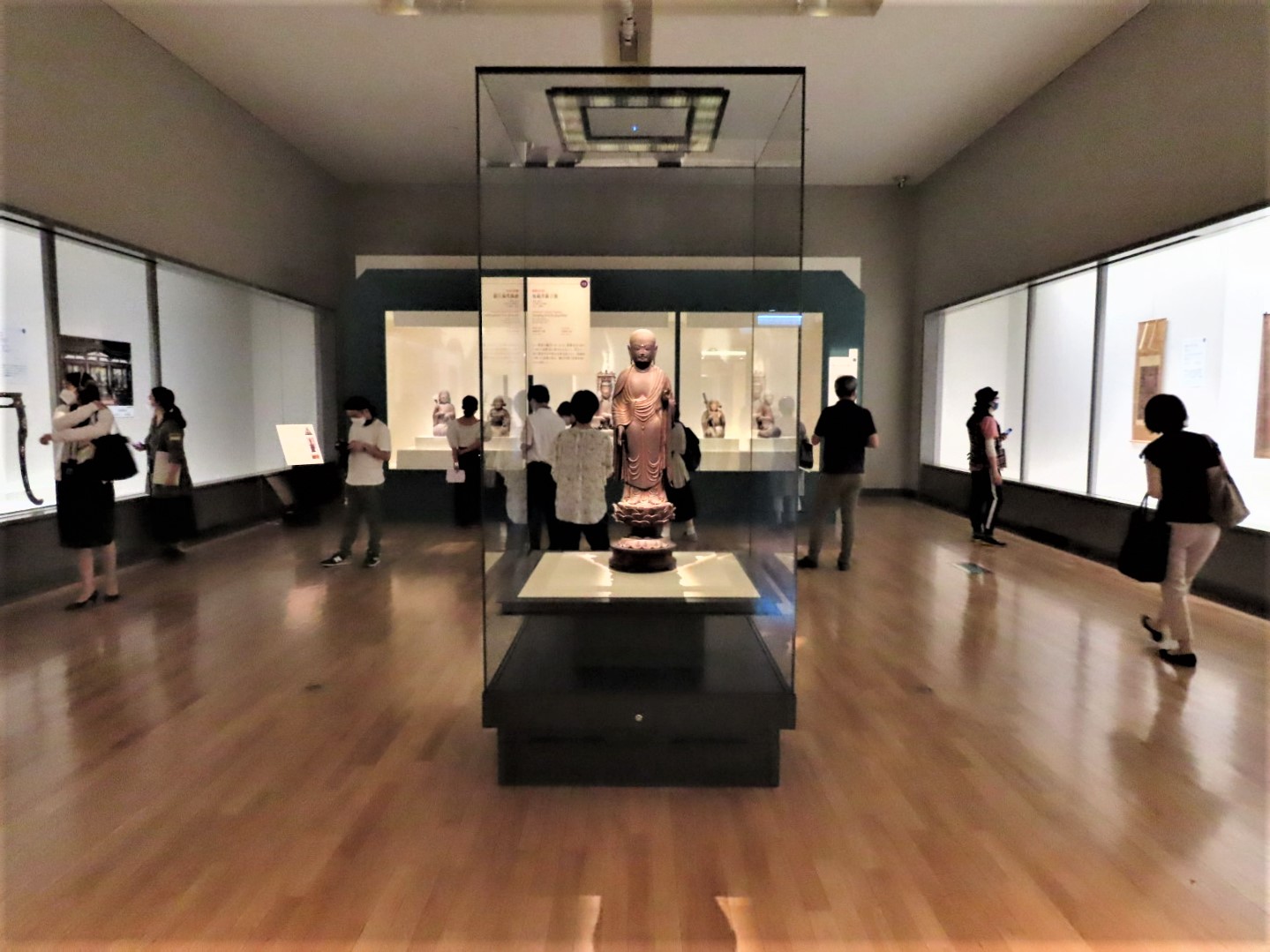
Exhibition scenery. It consists of five chapters and is divided into the first and second venues.
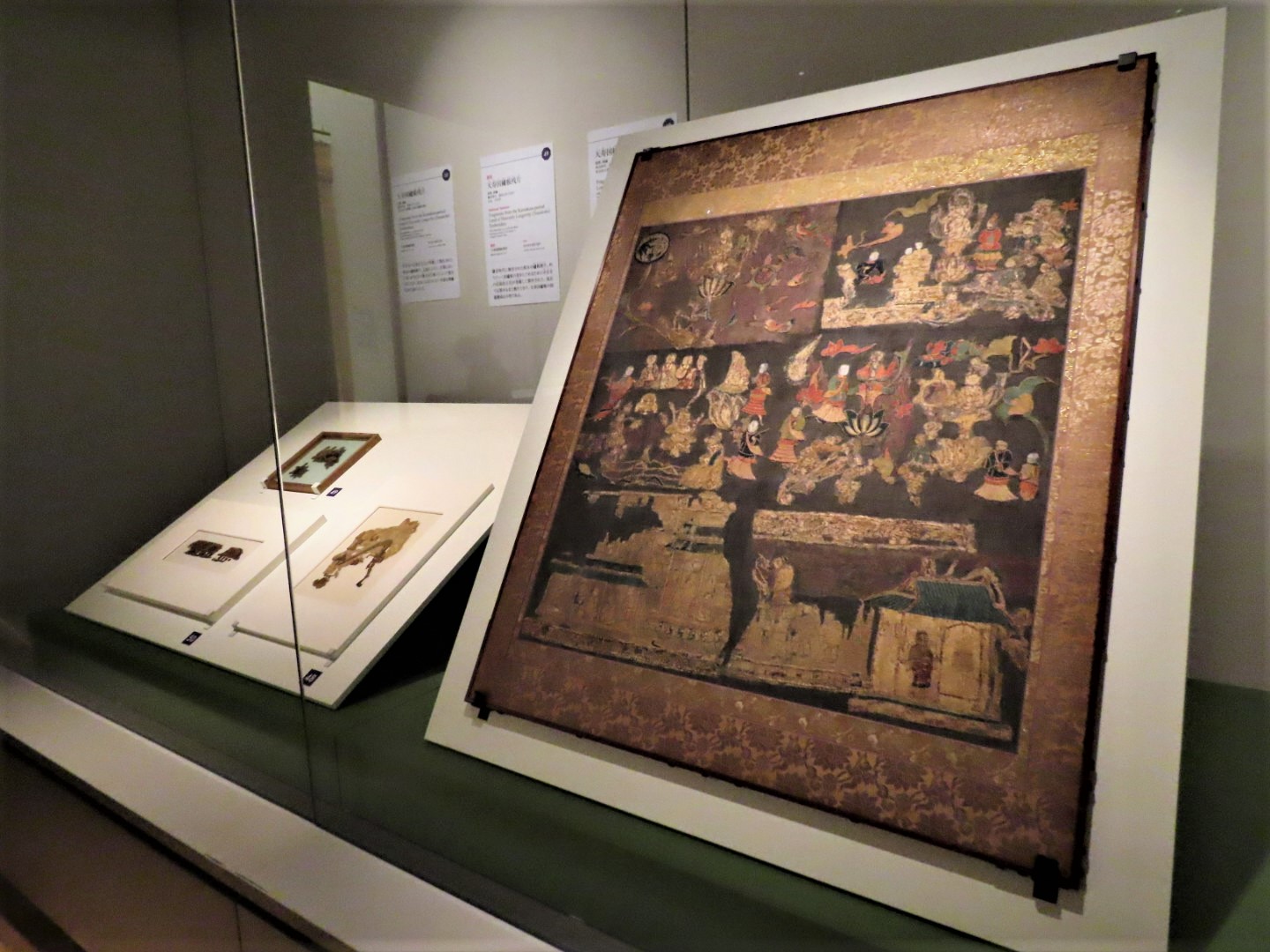
The treasures of famous temples, including the Tenjukoku Shushucho (Chuguji Collection) on the right side of the screen, are gathered.
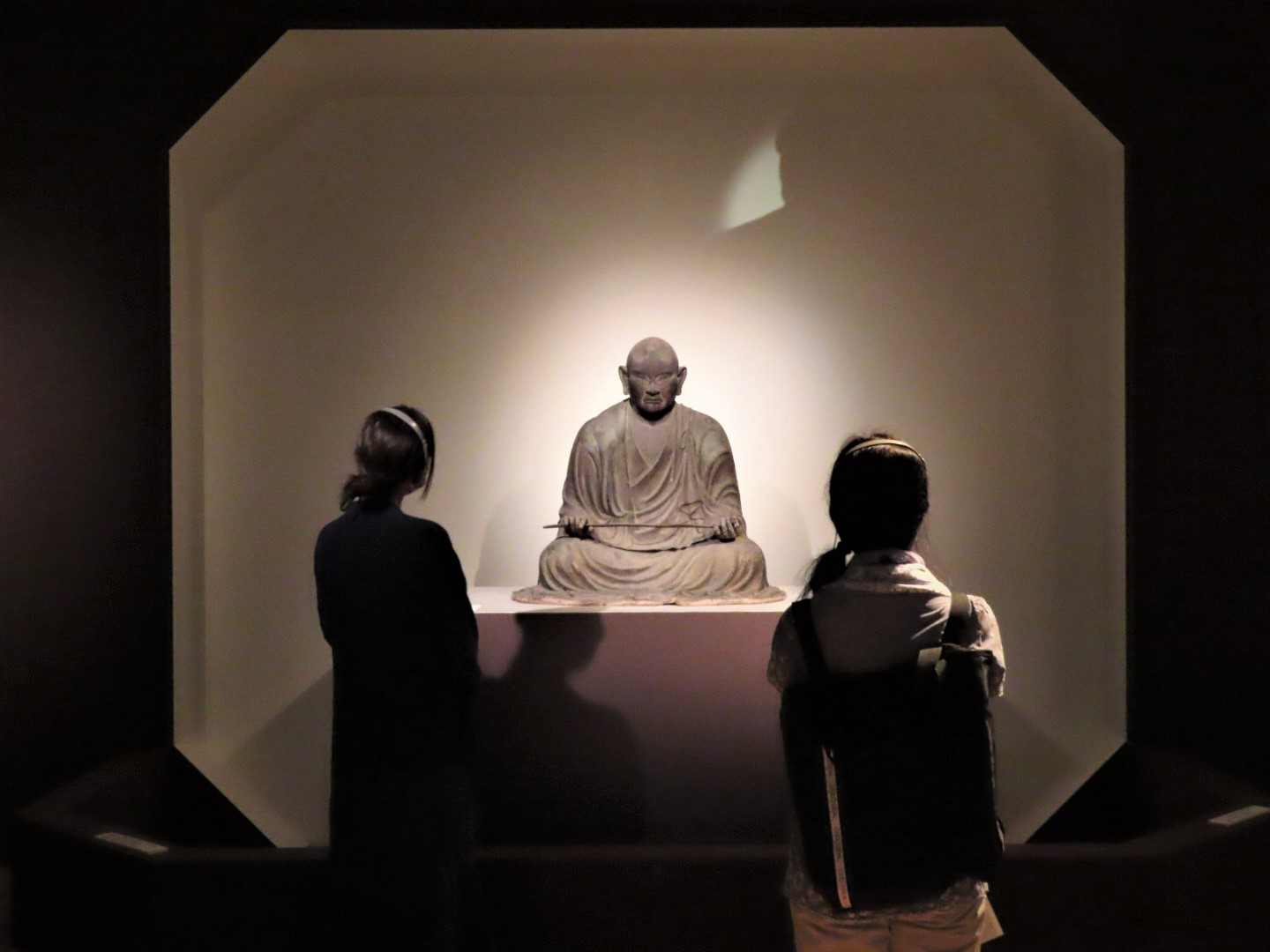
A sitting statue of the Gyoshin monk (Horyuji collection). One of the masterpieces of portrait sculpture in the Nara period
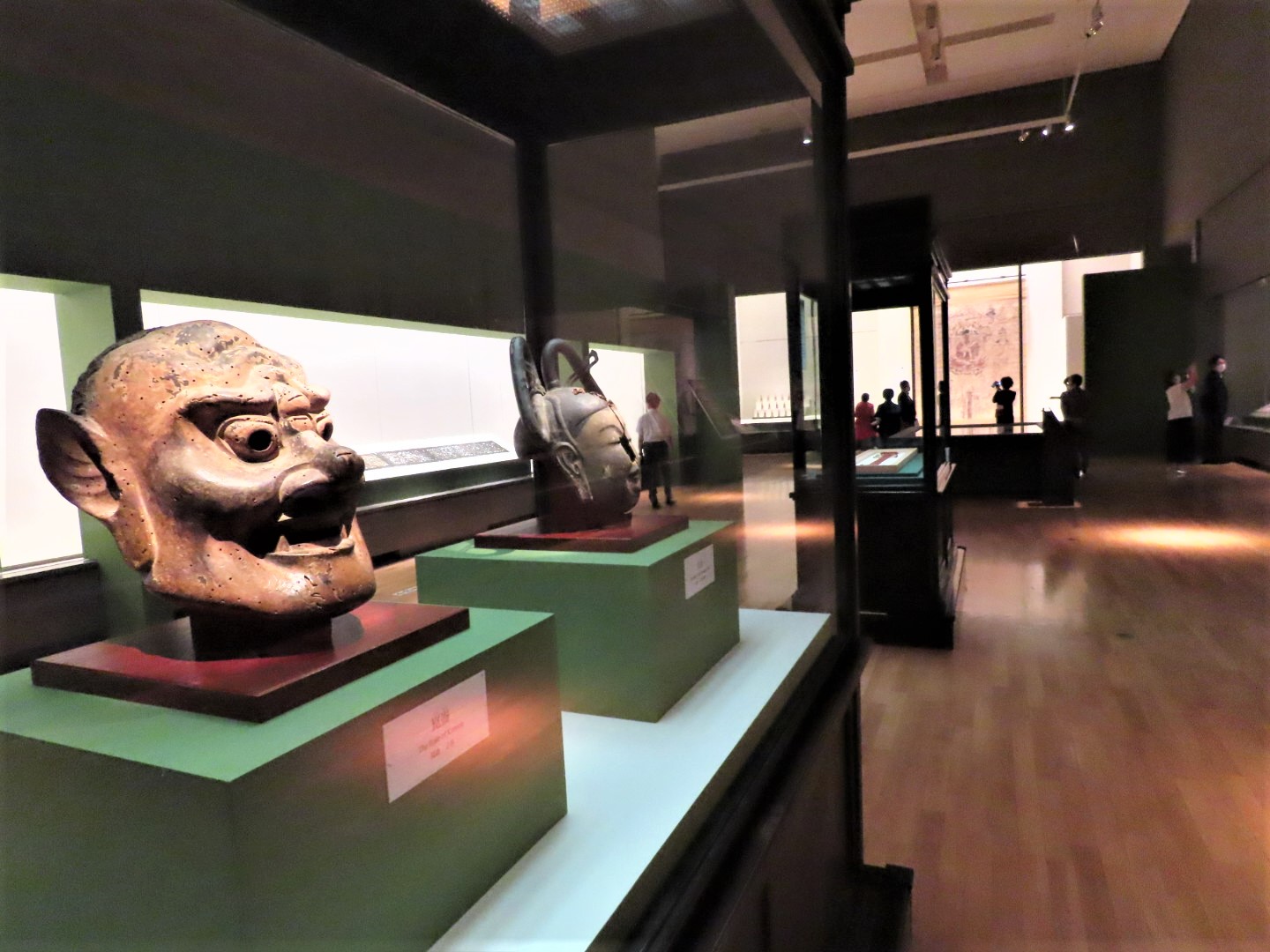
The one on display is the music side. Gigaku was introduced during the time of Empress Suiko, and Prince Shotoku says that he taught the boys this.
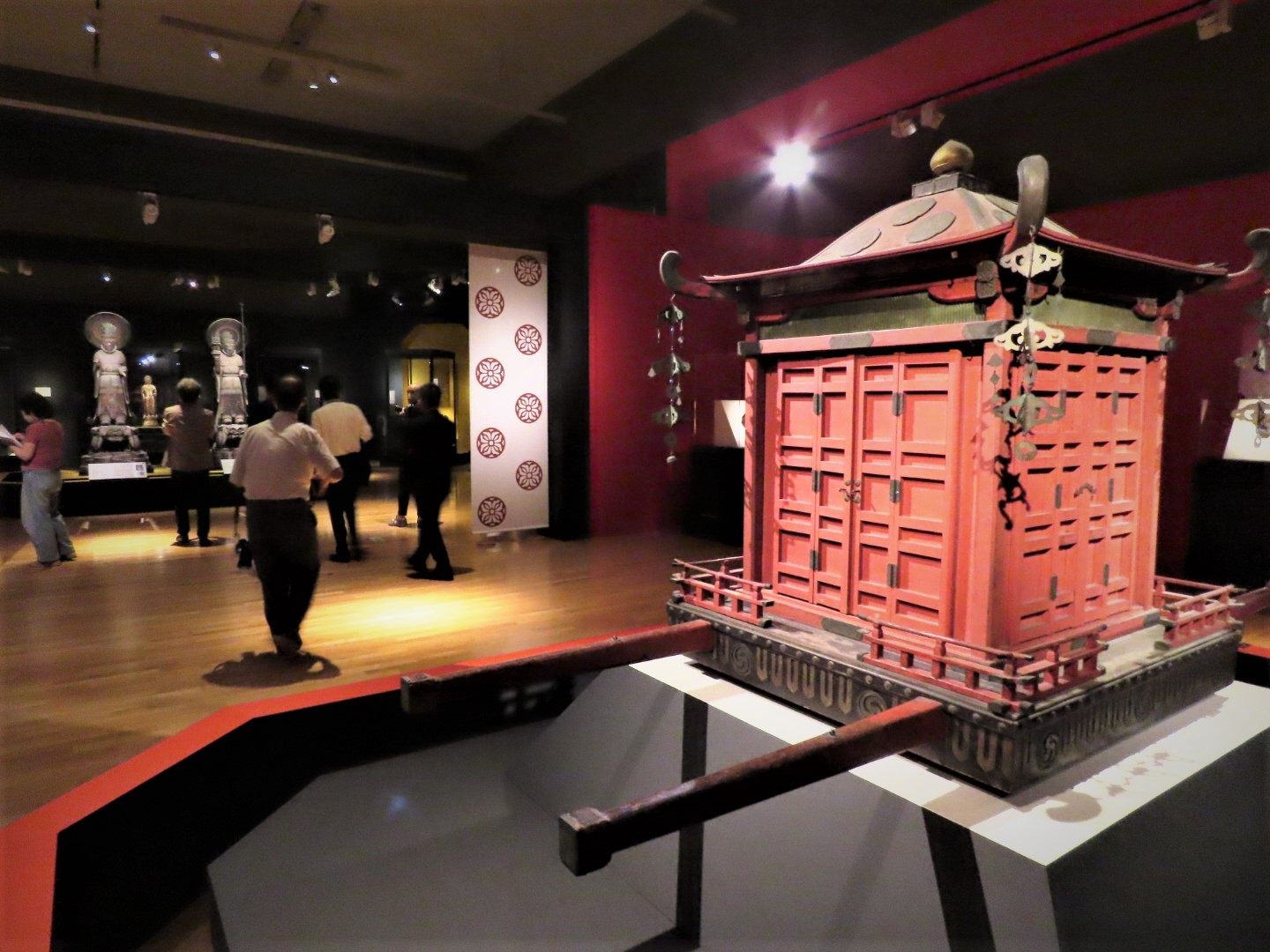
"Sari Mikoshi" used in the Holy Spirit Society in memory of Prince Shotoku (Horyuji Collection)
"Be precious with harmony" "I was very good at hearing and could hear many stories at once"
"Prince Shotoku" that every Japanese knows the anecdote even if he is not so familiar with Japanese history. It is also the "first great man" we meet in textbooks, and has long been revered as the object of worship of the Japanese people.
This year, Reiwazo (2021) is the 1400th anniversary of Prince Shotoku (574-622) . The special exhibition "Prince Shotoku and Horyuji Temple" held in this milestone year will showcase the portraits of the prince, treasures that are handed down as relics, and valuable cultural assets since the Asuka period, centering on the temple treasures that have been protected and handed down at Horyuji Temple. , The prince approaches the world of the prince and the prince worship.
Prince Shotoku and Horyuji Temple

Prince Shotoku's two princes, familiar from textbooks (Tokyo National Museum collection)

"Prince Shotoku statue (two-year-old statue)" with a childish loveliness (Horyuji warehouse)
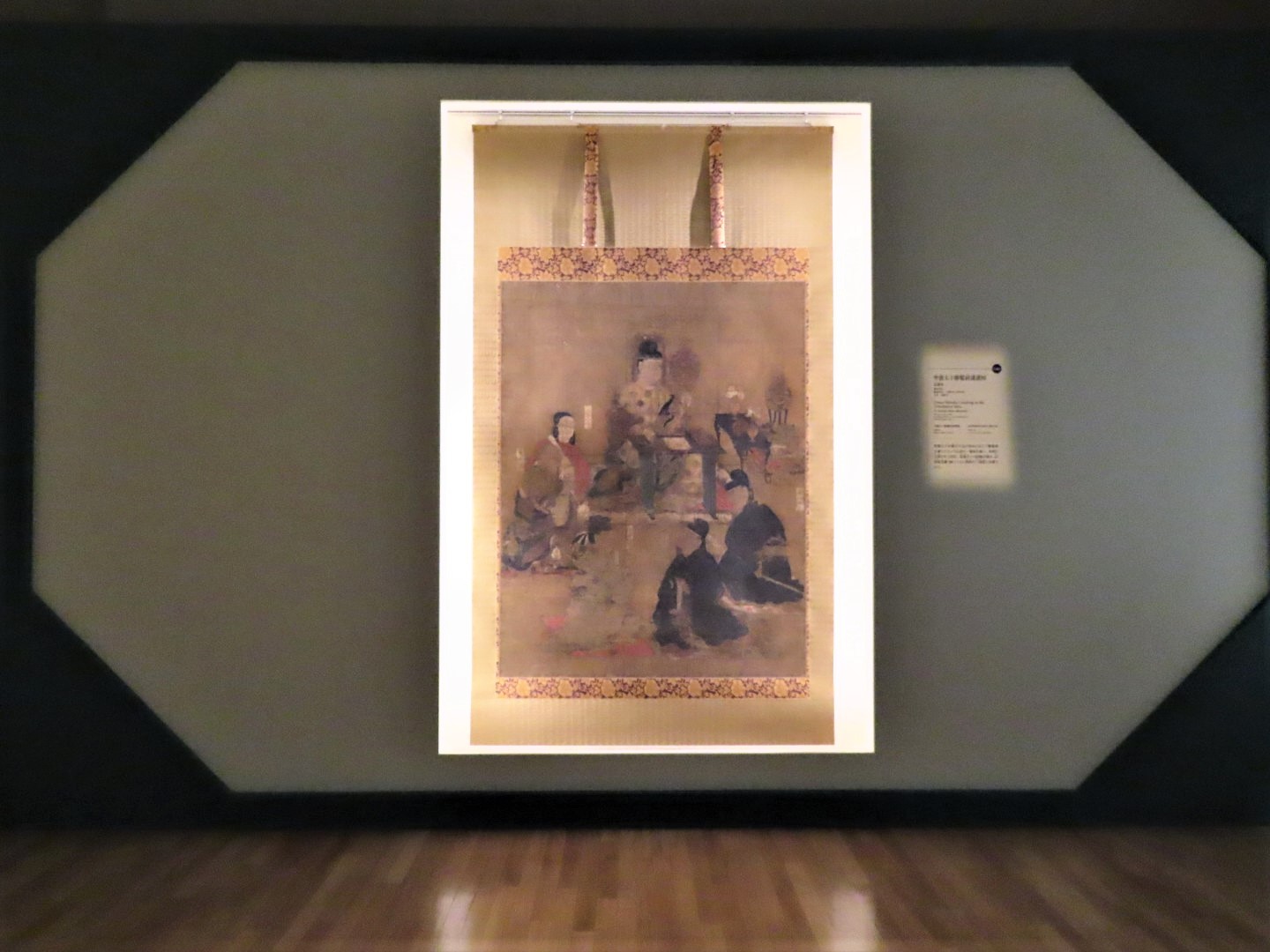
"Prince Shotoku Katsushika Keisho" (Tokyo National Museum collection) depicting Prince Shotoku taking "Katsuhokyo" to Emperor Suiko
Prince Shotoku is a person who assisted politics with Soga no Iruka during the time of Empress Suiko and promoted the nation-building by Buddhism.
Speaking of Prince Shotoku's achievements, the episode that made Sui, who was a great empire at that time, deliver the book "Tenko in the place of sunrise, the book to Tenshi in the place of sunset. This passage of "Tenko of the rising sun" is used as it is in the title of Ryoko Yamagishi's manga "Tenko of the rising sun".
Prince Shotoku built Horyuji Temple in 607, which is the oldest existing wooden structure in the world.
Although it was hit by a fire in 670, the Saiin Garan centered on the main hall and five-storied pagoda was rebuilt by the beginning of the 8th century. Buddhas from the Asuka period are enshrined in the Kondo, and the Toin temple centered around the Yumeden, which was built around 739, became the center of the prince's worship.
At the venue, not only the works owned by the Tokyo National Museum, but also many temple treasures related to Prince Shotoku from Horyuji Temple are exhibited, and it is structured so that you can enjoy a wide range of masterpieces of Buddhist art such as sculpture, painting, crafts, dyeing and weaving.
Exhibition work introduction
<< National Treasure Yakushi Nyorai Sitting Statue >> Asuka period, 7th century Nara, Horyuji warehouse
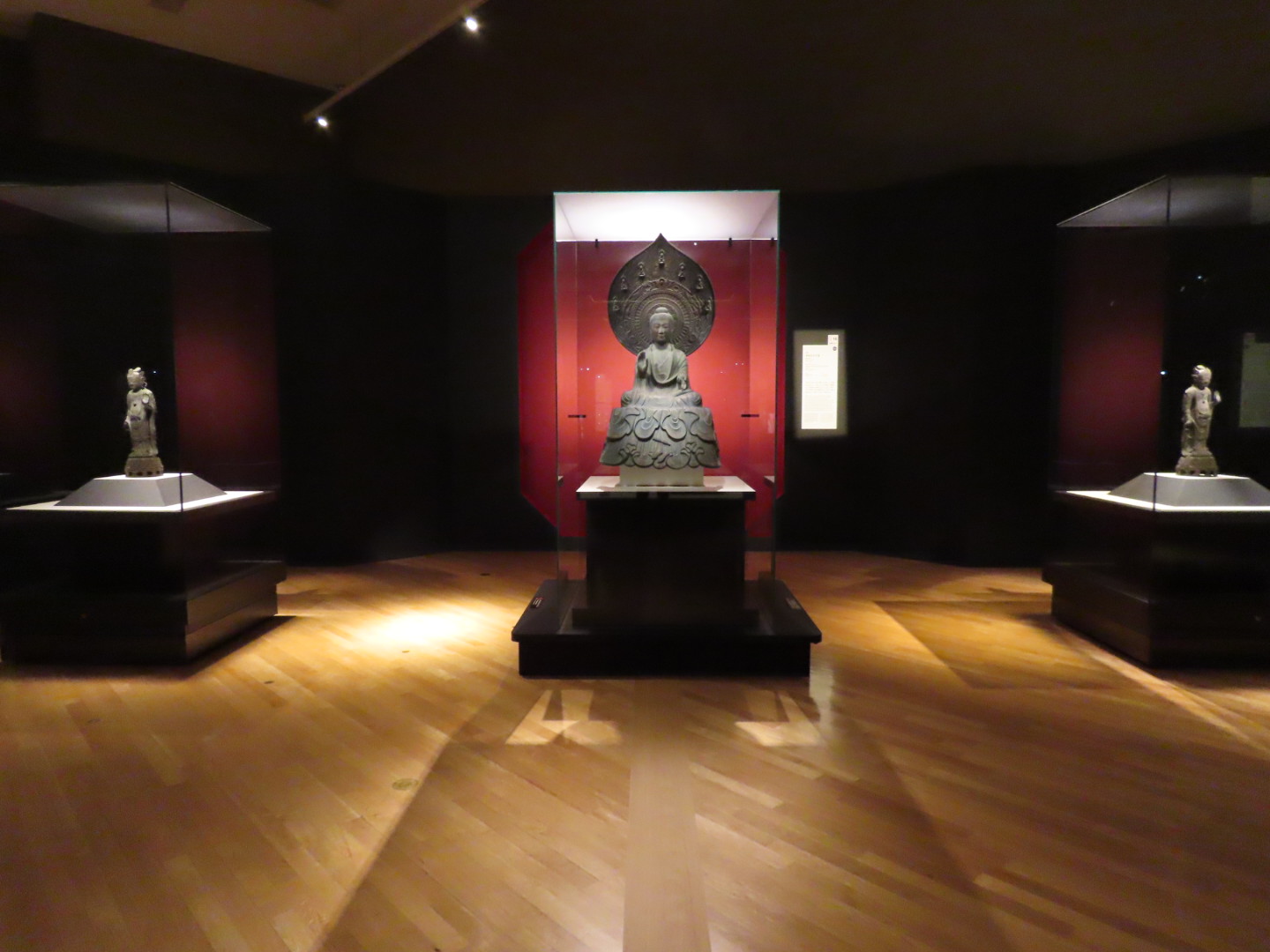
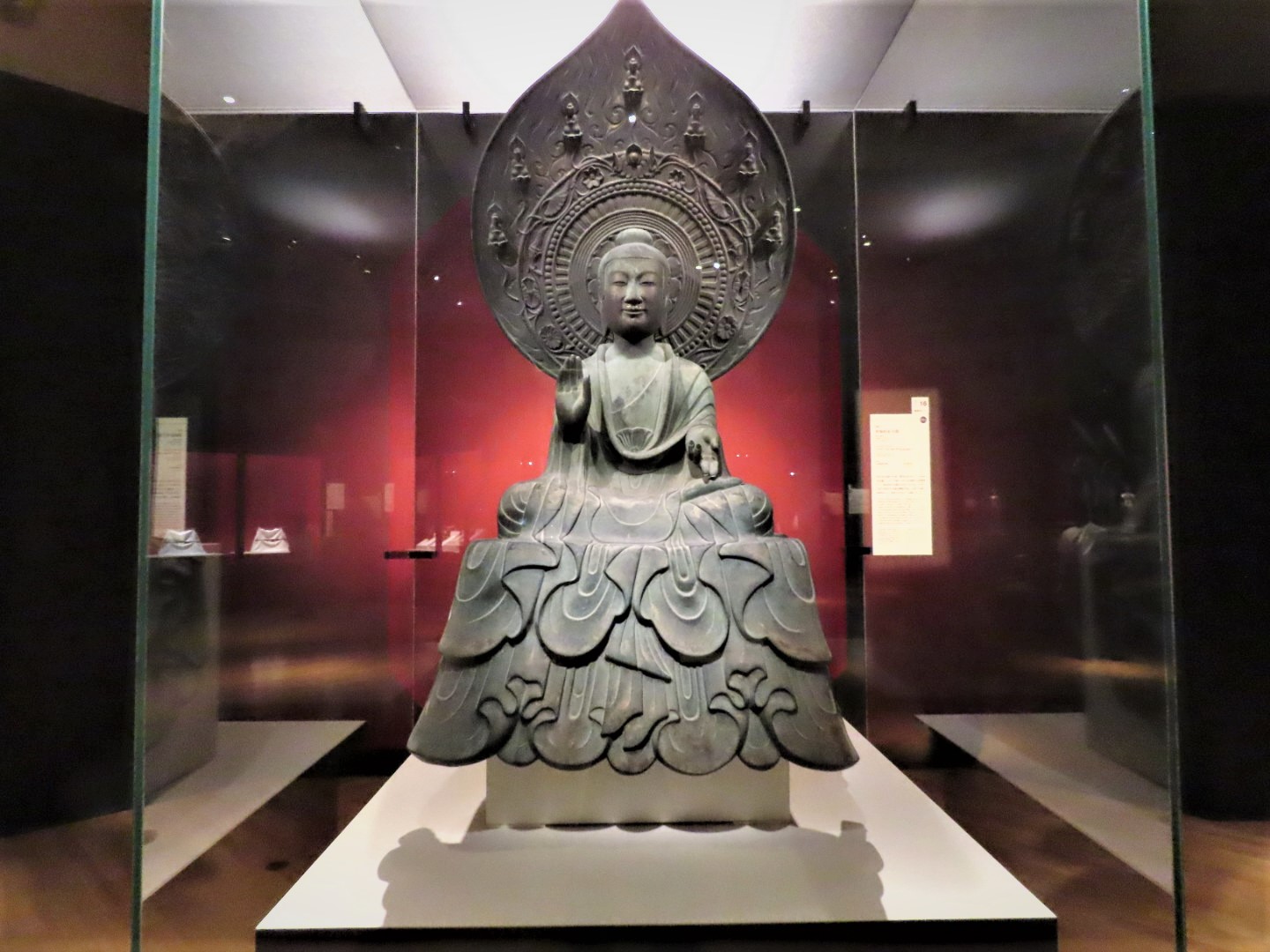
The mystery fascinates people. A masterpiece of ancient Buddha sculpture.
A work that is said to be a masterpiece that shows the stylistic beauty of the Asuka period, such as the mysterious facial features with a smile on the mouth and the linear clothing expression, which is the principal image of the Kondo Higashi. According to the inscription on the back of the halo, it was built in 607, but since the casting technology is more advanced than the statue of Shakyamuni in the Kondo, which was completed in 623, the actual production date is considered to be after 623. Has been done.
You can feel the rounded softness of the cheeks, neck, and hands, and you can feel the outstanding skill of the Buddhist priest. It is one of the representative Buddhist statues of the Asuka period, but it seems that many mysteries remain, such as the inscription and pedestal as well as the production date.
《Den Tachibana's memorial Buddha kitchen》 Asuka period 7th-8th century Nara Horyuji warehouse
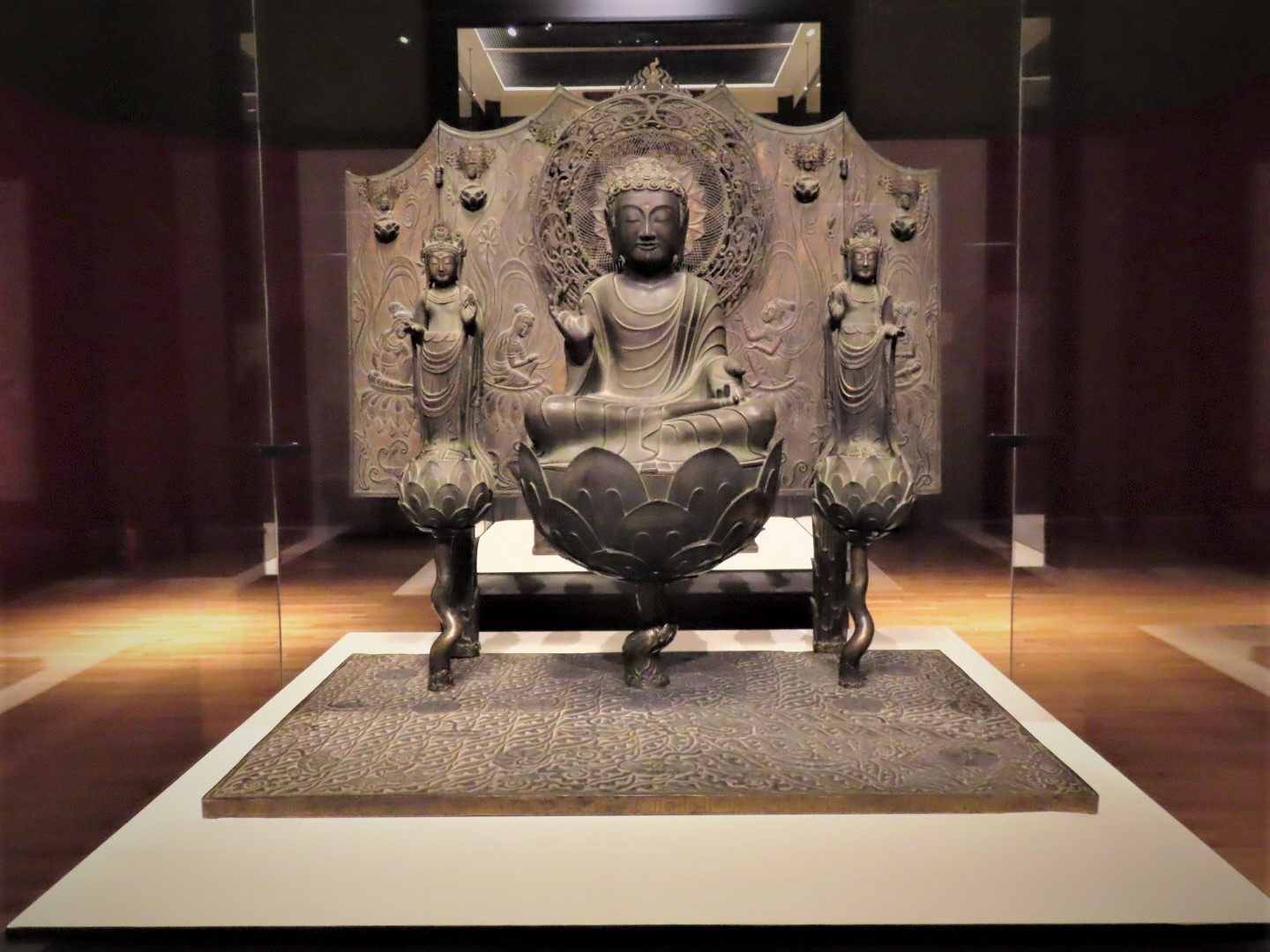
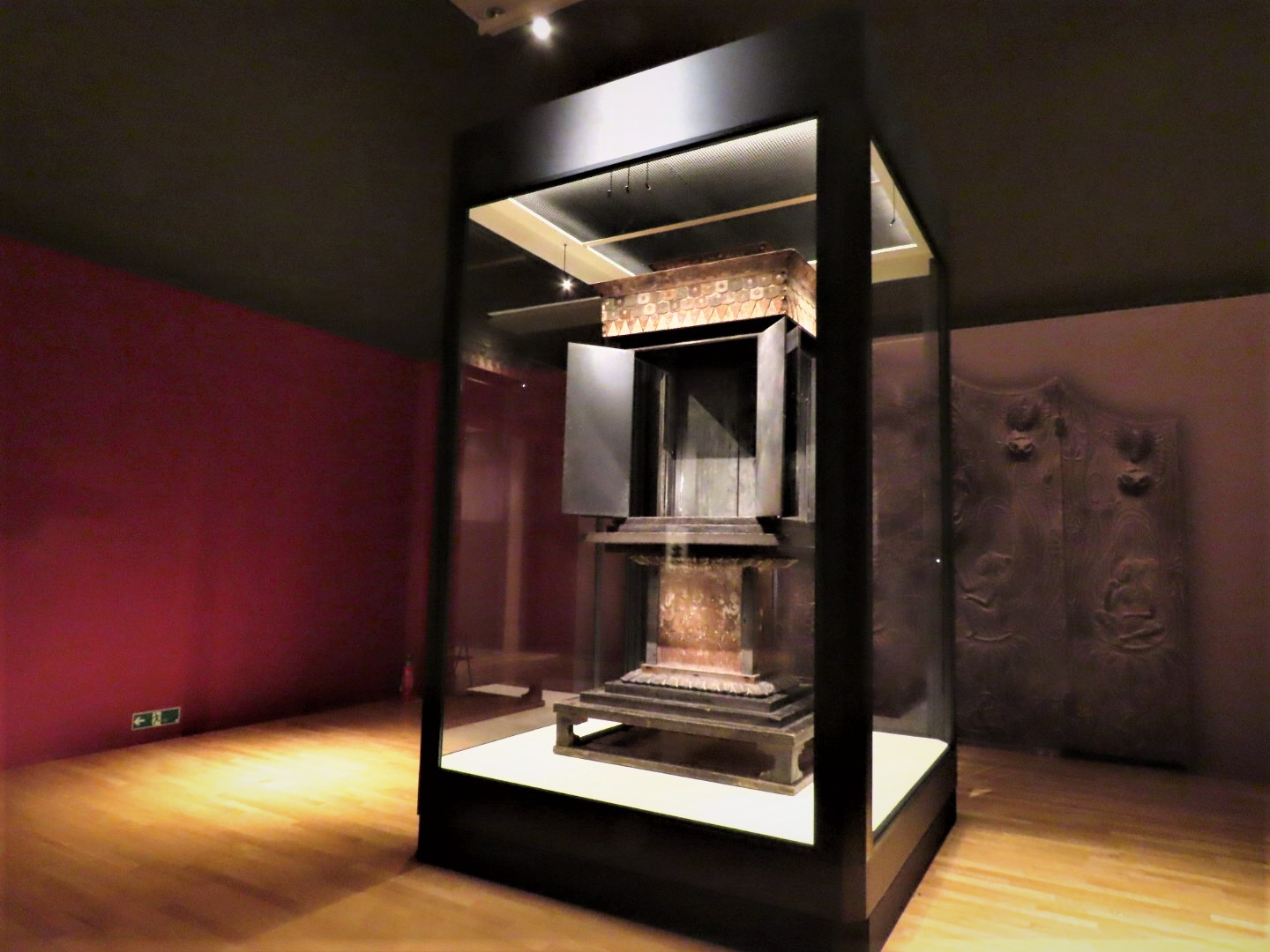
The highest peak of beautiful Hakuho art.
Amitabha triad statue with an impressive soft smile. Along with the delicate workmanship, the flowing curves seen on the fingertips and clothing are exceptionally beautiful, and it is considered to be the best masterpiece among the gold and bronze Buddhas created during the Hakuho period. The original kitchen with a canopy equipped with Mt. Meru, which enshrines the Amitabha triad statue. It is a work that conveys the ancient prayer space to the present.
《Seven Stars Bronze Sword》 Asuka period 7th century Nara Horyuji warehouse (former Horyuji dedication treasure)
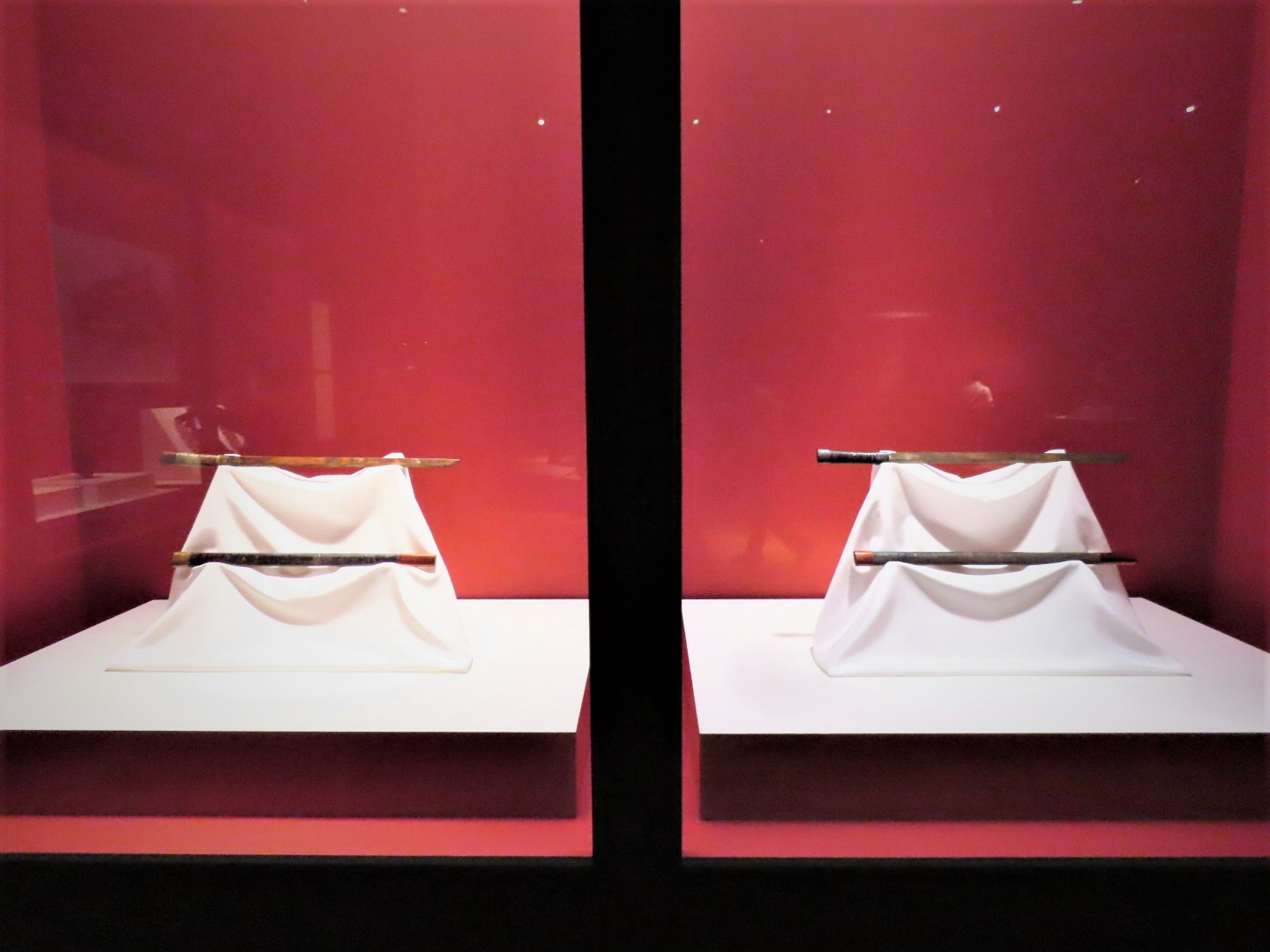
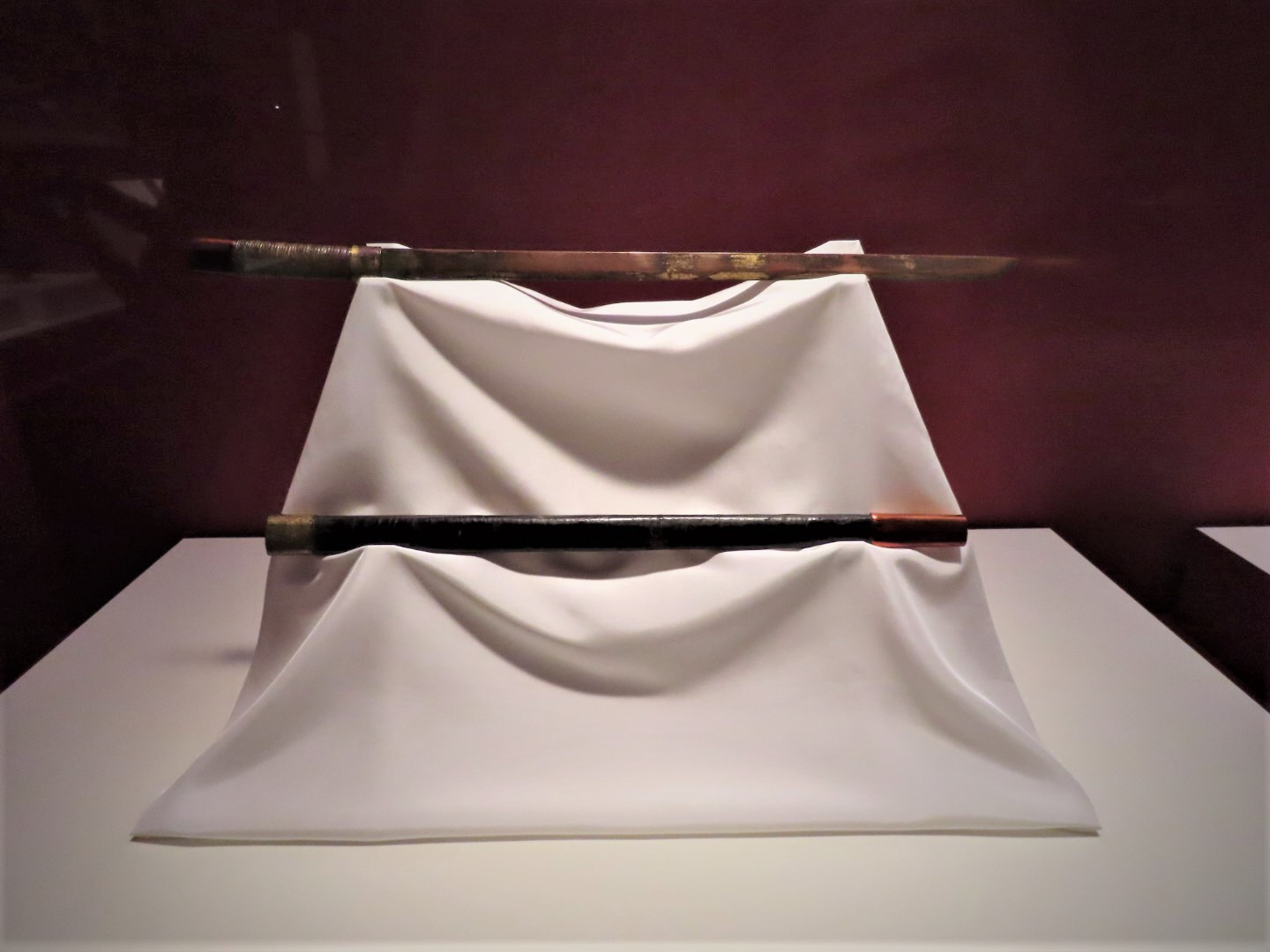
If you are a sword fan, please click here.
This is what the sword-loving writer paid attention to. It is a beautiful copper sword that represents the Big Dipper on the blade. There are other swords designed with the Big Dipper as a motif, such as the "Big Dipper" in Shitennoji, Osaka, but it was believed that the Big Dipper had a strong power to defeat the enemy in ancient China. It seems that such swords have come to be made.
It seems that the blade was painted with lacquer and pressed with gold leaf, and gold color still remains everywhere. At that time, I was wondering how magnificent the sword was, but I was the only one …
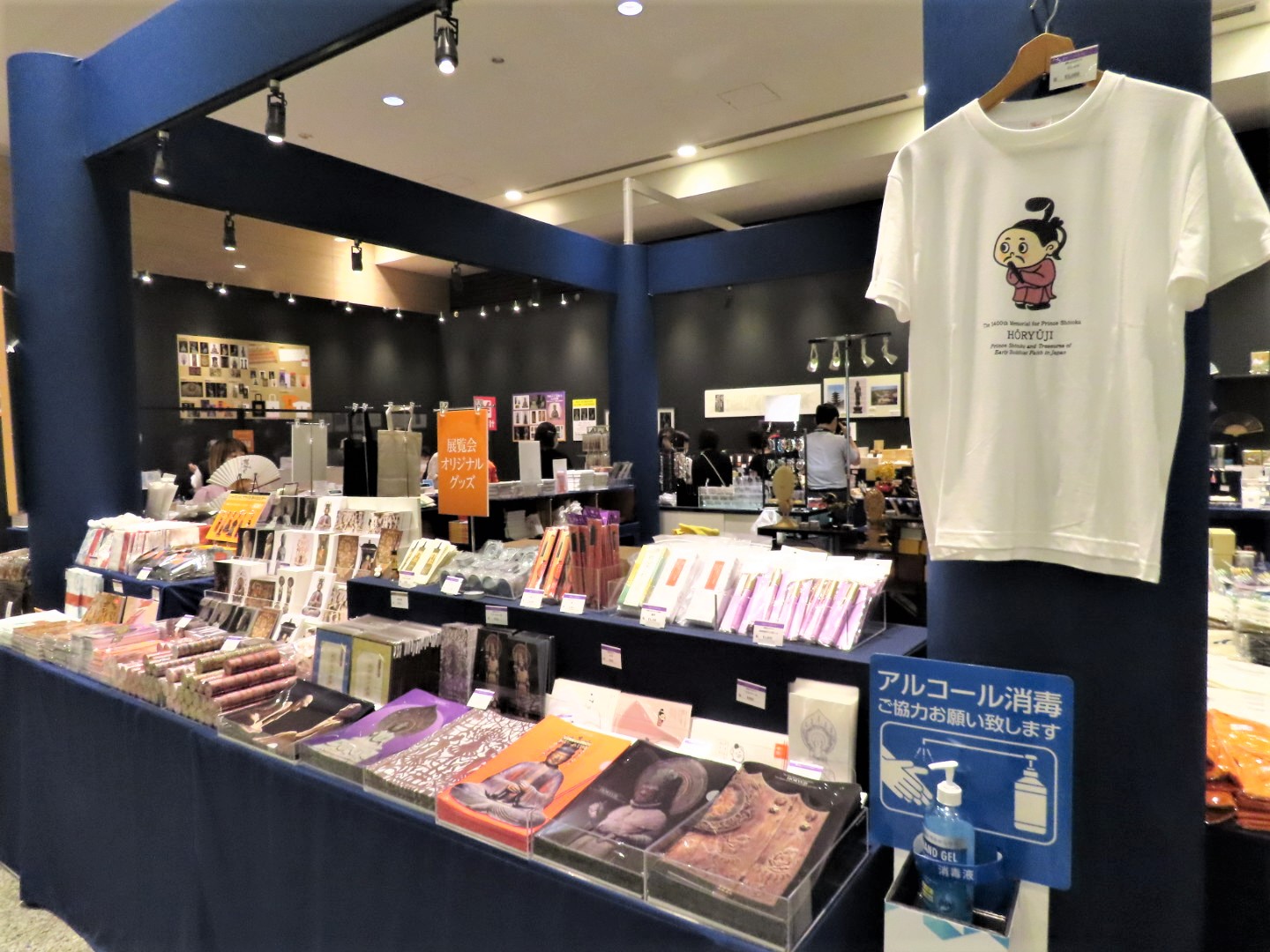
Exhibition goods sales corner

"Eshinkyo Tenugui", which represents the Heart Sutra with "pictures"
Speaking of Tokyo National Museum, it is also famous for its fulfilling product sales.
In addition to standard products such as T-shirts and pictorial records, there are also unique goods such as Prince Shotoku's dog "Yukimaru" goods and "Eshinkyo Tenugui Oru" that exploded the business spirit of Tohaku (?).
Also, at the Toyokan of the Tokyo National Museum, the museum theater "Horyuji National Treasure Kondo-Prince Shotoku's Heart" will be screened from Wednesday, July 14, 2021 to Sunday, October 10, 2021. Everything inside the Kondo of Horyuji Temple in Nara, which cannot be entered locally, is reproduced by virtual reality, and you can experience the Buddha statue and mural painting of the principal image up close!
For details, please see the official website of the Museum Theater.
Outline of the event
| Exhibition name | Prince Shotoku 1400 Memorial Special Exhibition "Prince Shotoku and Horyuji Temple" |
| Legislative session | July 13th (Tuesday) -September 5th (Sunday), 2021 First term: July 13th (Tuesday) -August 9th (Monday / holiday), 2021 Late: August 11th (Wednesday) -September 5th (Sunday), 2021 |
| Opening hours | 9: 30-17: 00 |
| closing day | Monday * However, the museum will be open on Monday, August 9th, and will be closed only for this exhibition on Tuesday, August 10th. |
| Admission fee | General 2,200 yen University student 1,400 yen High school students 1,000 yen * To alleviate congestion, this exhibition requires advance reservations (reserved-seat tickets). All customers are required to reserve a reserved-seat ticket for admission. Please check the exhibition official website for details on "advance reserved-seat tickets" and "same-day tickets". |
| Venue | Tokyo National Museum Heiseikan (Ueno Park) |
| Official site | https://tsumugu.yomiuri.co.jp/horyuji2021/index.html |


